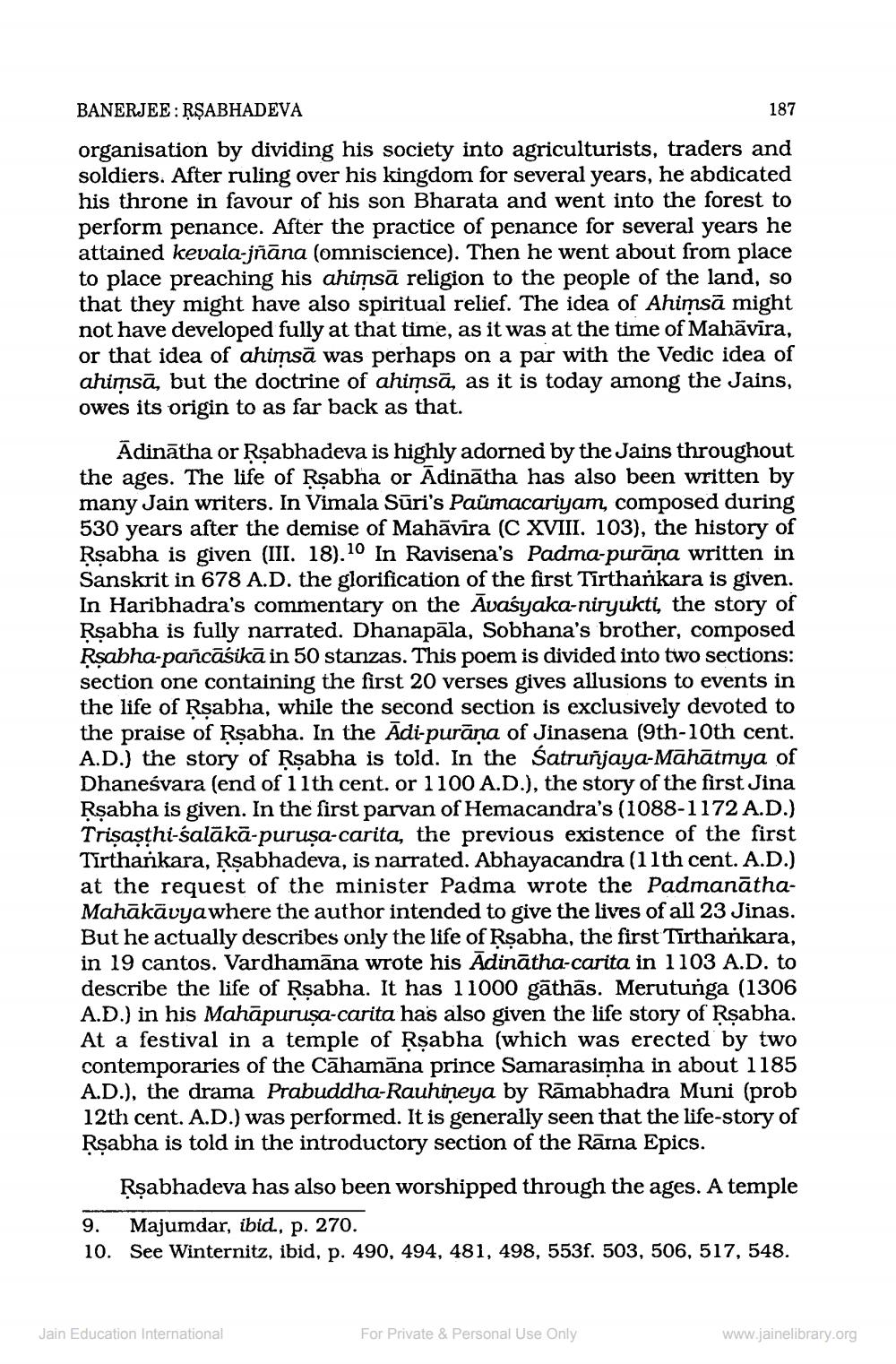________________
BANERJEE: RŞABHADEVA
187
organisation by dividing his society into agriculturists, traders and soldiers. After ruling over his kingdom for several years, he abdicated his throne in favour of his son Bharata and went into the forest to perform penance. After the practice of penance for several years he attained kevala-jñāna (omniscience). Then he went about from place to place preaching his ahimsā religion to the people of the land, so that they might have also spiritual relief. The idea of Ahimsā might not have developed fully at that time, as it was at the time of Mahāvīra, or that idea of ahimsā was perhaps on a par with the Vedic idea of ahimsā, but the doctrine of ahimsā, as it is today among the Jains, owes its origin to as far back as that.
Ādinātha or Rsabhadeva is highly adorned by the Jains throughout the ages. The life of Rsabha or Ādinātha has also been written by many Jain writers. In Vimala Sūri's Paümacariyam, composed during 530 years after the demise of Mahāvira (C XVIII. 103), the history of Rsabha is given (III. 18).10 In Ravisena's Padma-purāna written in Sanskrit in 678 A.D. the glorification of the first Tirthankara is given. In Haribhadra's commentary on the Avasyaka-niryukti, the story of Rsabha is fully narrated. Dhanapāla, Sobhana's brother, composed Rsabha-pañcāśikā in 50 stanzas. This poem is divided into two sections: section one containing the first 20 verses gives allusions to events in the life of Rsabha, while the second section is exclusively devoted to the praise of Rsabha. In the Adi-purana of Jinasena (9th-10th cent. A.D.) the story of Rsabha is told. In the Satrunjaya-Mahātmya of Dhaneśvara (end of 11th cent. or 1100 A.D.), the story of the first Jina Rsabha is given. In the first parvan of Hemacandra's (1088-1172 A.D.) Trisasthi-salākā-purusa-carita, the previous existence of the first Tirthankara, Rşabhadeva, is narrated. Abhayacandra (11th cent. A.D.) at the request of the minister Padma wrote the PadmanāthaMahākāvya where the author intended to give the lives of all 23 Jinas. But he actually describes only the life of Rsabha, the first Tirthankara, in 19 cantos. Vardhamāna wrote his Ādinātha-carita in 1103 A.D. to describe the life of Rsabha. It has 11000 gāthās. Merutunga (1306 A.D.) in his Mahāpurusa-carita has also given the life story of Rşabha. At a festival in a temple of Rsabha (which was erected by two contemporaries of the Cāhamāna prince Samarasimha in about 1185 A.D.), the drama Prabuddha-Rauhineya by Rāmabhadra Muni (prob 12th cent. A.D.) was performed. It is generally seen that the life-story of Rsabha is told in the introductory section of the Rärna Epics.
Rşabhadeva has also been worshipped through the ages. A temple 9. Majumdar, ibid., p. 270. 10. See Winternitz, ibid, p. 490, 494, 481, 498, 553f. 503, 506, 517, 548.
Jain Education International
For Private & Personal Use Only
www.jainelibrary.org




